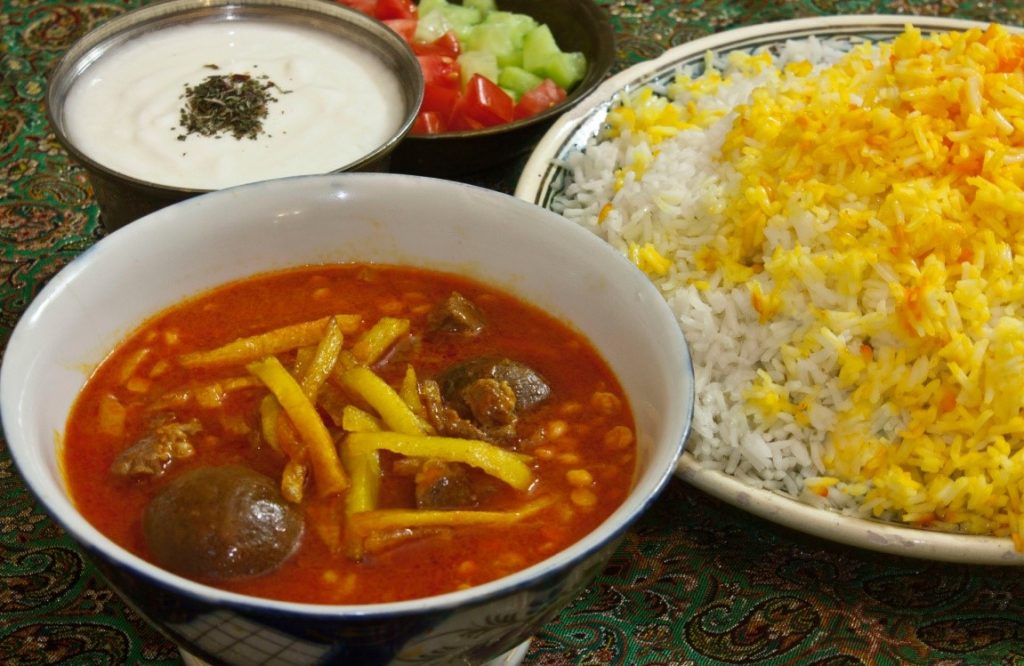Iranian cuisine comprises the cooking traditions of Iran. The term Persian cuisine is also used due to the fact that Iran is also known as Persia, even though the ethnic Persians are only one of Iran’s native ethnic groups that have contributed to the culinary culture.
Iranian food is inventive, rich and varied. It is exotic yet simple; healthy, yet colourful. Persian food is not spicy. Herbs are used a lot, as is fruit – from plums and pomegranates to quince, prunes, and raisins. The main Persian cuisines are combinations of rice with meat, chicken or fish and plenty of garlic, onion, vegetables, nuts, and herbs. To achieve a delicious taste and a balanced diet, unique Persian spices such as saffron, diced limes, cinnamon, and parsley are mixed delicately and used in some special dishes.
Gheimeh is one of the best Persian foods
Gheimeh (Persian: قیمه) is an Iranian stew (khoresh) consisting of mutton, tomatoes, split peas, onion and dried lime. The stew is garnished with aubergine or saffron flavored fried potatoes and is usually served with rice (polow).
Stews are not all about meat, this vegetarian recipe of Khoresht Gheymeh is full of flavor. Simply omit meat from classic recipe and top it with extra french fries and use vegetable oil! that’s it! This stew is super delicious.

Loobia polo is one of the best Persian foods
Rice is a staple of the Iranian diet. Different methods are applied in cooking rice. Chelow is a plain rice that is steamed. You can serve chelow with stews like ghormeh sabzi, khoresht karafs, khoresht gheimeh and all kinds of meat and kebabs. Polow is a persian dish that is cooked with vegetables, meat, chicken, and various kinds of beans like loobia polo and baghali polo. How to make a colorful and tasty loobia polo?
loobiya polo is made with a variety of recipes, for example, with chopped meat, chicken or soy, or like the one in this recipe, with ground beef.
How to cook safety?
Washing hands
Our hands are one of the main ways that germs are spread. Harmful bacteria can be spread very easily from people’s hands to food, work surfaces and equipment.
It’s always important to wash them thoroughly with soap and warm water before handling food, and especially after touching raw food, the bin, pets, and going to the toilet.
Washing fruit and vegetables
Wash fruit and vegetables under cold running water before you eat them. This helps remove visible dirt and germs that may be on the surface. Peeling or cooking fruit and vegetables can also remove these germs.
Never use washing-up liquid or other household cleaning products to clean fruit and vegetables, as they’re not intended for human consumption and you may accidentally leave some of the product on the food.
Keep food and cooking material cool
Refrigerate foods quickly because cold temperatures keep harmful bacteria from growing and multiplying.
Set your refrigerator no warmer than 40 F and the freezer no warmer than 0 F. Check these temperatures from time to time with an appliance thermometer.